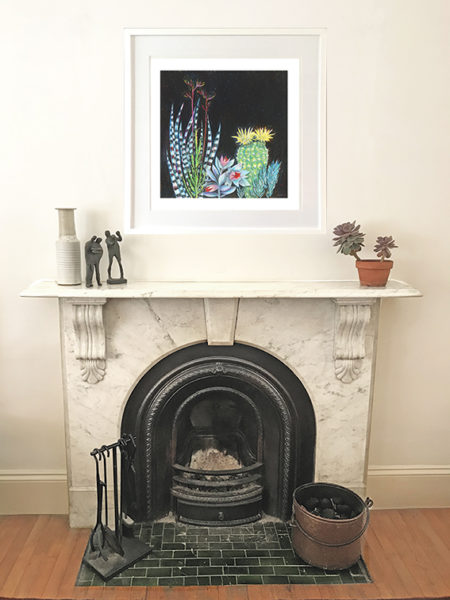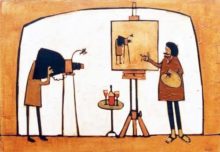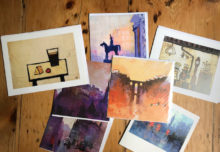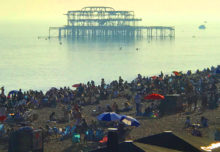
COLLAGE and DECOUPAGE as an ARTFORM
Collage
Collage is where the artist glues extra layers of material onto their canvas or paper artwork. The effect can be wonderful.
Collage as an artform has developed for just over a century since Picasso and Braque started using it. Picasso pasted pieces from magazines and newspapers to add references to the outside world. Other artists have added photographs and other found objects to their artwork.
Decoupage
Decoupage technique is similar and often also used to decorate other objects like small boxes or pieces of furniture. Decoupage is slightly different because it generally refers to the glued layer being cut out to specific shapes. Decoupage as a way of decorating or enhancing objects goes back much further than the use of collage in contemporary art.
But collage and decoupage are basically the same. The artist sticks layers of material on top of lower layers. Then the artist can even over-paint or stick on more layers.
Onward from Picasso.
Picasso and other early users of the collage technique used printed paper material for collage to add extra interest to their paintings.
But there is now a crucial new factor that didn’t apply to Picasso or Braque.
That is acrylic paint. Acrylic paint came into artist’s studios in the 1960’s. It is a waters-soluble paint format that can be used thick or thin, and it dries very quickly. Once dry it is permanent and fixed. You can use it on canvas or paper.
It is better than oil-paint because acrylic fixes permanently within hours and not weeks. It doesn’t smell strong. And it will not stay wet for ages like oils. Oil painting over still wet paint mixes top-coat with bottom coat. And oil paint won’t work on paper because it bleeds across the edges of one colour into the next.
Acrylic is also better than water colour and gouache for a similar reason. If you re-wet a water colour after you have applied it expect it to run or smudge. And watercolour has to be used on paper not canvas, and has to be displayed behind glass.
That doesn’t happen with acrylics. Use on paper or canvas, dries fast, can be overpainted.
But acrylic comes with a disadvantage. If the artist squeezes out a bit more acrylic paint from the tube that they use, it dries quickly, and cannot be mixed or used. It cannot be saved. It might be wasted.
Turning disadvantage into advantage.
However, a clever and resourceful artist can use wet unused acrylic to paint onto spare paper or canvas. This is ideal for later use as collage and decoupage material.
The artist can experiment with extra left-over acrylic paint to develop textures, mixtures, and effects. These will dry quickly and can then be stored for use a collage material when applicable. BINGO.
And that is what Shyama Ruffell does.
Shyama creates new artwork using material painted using spare, left over, wet acrylic. She creates new collage material and cuts it to make decoupage elements. This is an exciting and creative process. The new artwork can even be photographed and developed digitally to make new fine art prints.
You can see some of her latest collages at our family website www.artpublish.com
********************************




